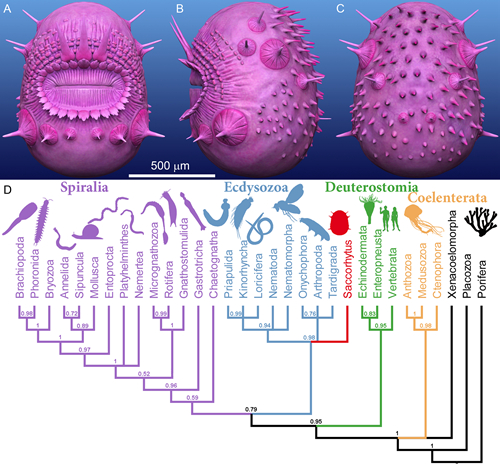An international research team led by NIGPAS has used hundreds of new fossil specimens to clarify the anatomy and evolutionary affinity of Saccorhytus, originally thought to be a deuterostome. The study was published in Nature on August 17, 2022.
Saccorhytus, which was originally described in 2017, was discovered from the Cambrian of southern Shaanxi, China. Its mouth is surrounded by radial folds, nodes, and holes that were originally interpreted as pharyngeal openings, a primitive feature of deuterostomes.
Were those holes around the mouth really pharyngeal openings? Based on the new discoveries, the team interpreted the integument as cuticle rather than epidermis. This interpretation is consistent with the abundance of Saccorhytus specimens in the studied rocks, indicating that they have relatively high preservation potential.
In order to test the ecdysozoan hypothesis, the research team conducted a comprehensive morphology-based phylogenetic analysis along with several experiments to test different possibilities. In all tests, results supported the hypothesis that Saccorhytus belongs to the total-group Ecdysozoa.

Download:
